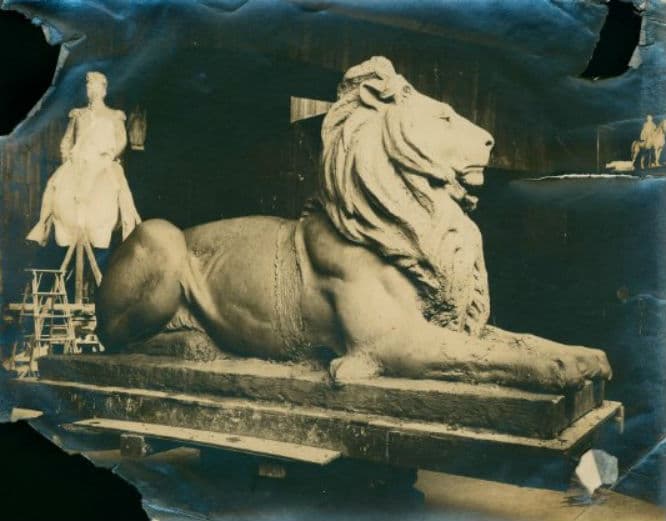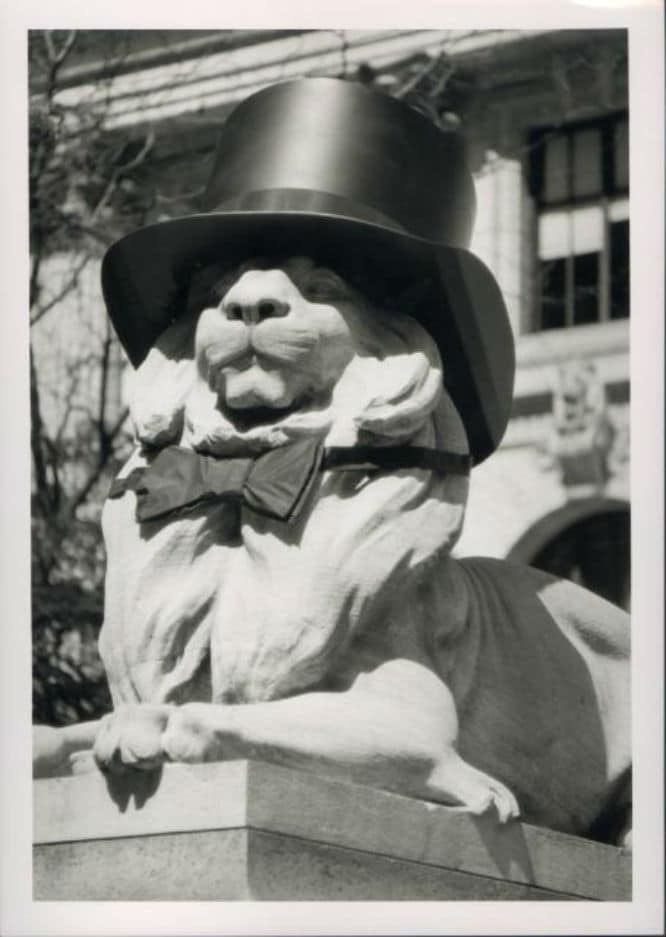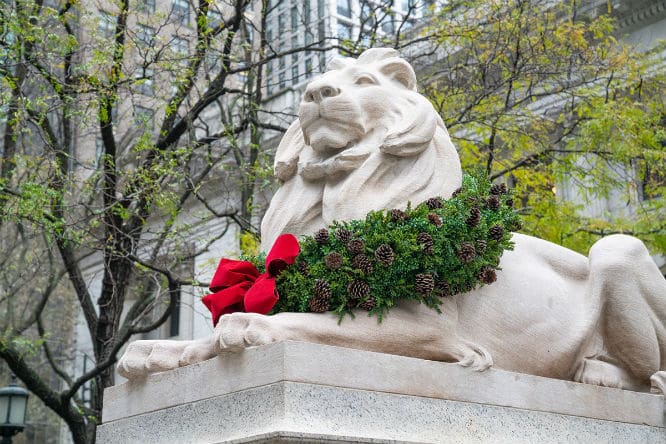
Whether you’ve tried to get a photo on their backs or admired the wreaths around their necks during the holidays, you have to know the New York Public Library’s stoic guardians “Patience and Fortitude.”
The great lion statues, which guard the library’s flagship 42nd Street Beaux-Arts building, were named by Mayor Fiorello La Guardia on his radio show during the Great Depression. He said New Yorkers needed those qualities to get through tough times. Definitely still applicable today!
In honor of their 109th birthday this year, here are 10 fun facts you probably didn’t know about your friendly neighborhood lions:
1. Some People Wanted Them To Be Bison Instead of Lions
“Some people” as in…former President Teddy Roosevelt! Apparently when they were first unveiled in May of 1911, Roosevelt did not approve. He thought they should be Bison since they are native to North America, unlike lions.
2. …And Others Thought They Should Be Beavers
Just imagine two enormous beavers sitting on Fifth Avenue! A small group of New Yorkers wanted the statues to be beavers as a tribute to the library’s co-founder John Astor. His family made their fortune in beaver pelts.
3. They Are Three Feet Longer Than Real Lions
Patience and Fortitude are over 11 feet long (not including their tails!). An average African lion is eight feet long at most.
4. They Were Almost Dubbed “Lord and Lady”
Before the Mayor gave them their prestigious names, people called them all different things: Leo Astor and Leo Lenox, for example, after the Library’s co-founders, and even “Lady” Astor and Lord Lenox (though they are both male).
5. They Have Favorite Books

Okay, it might be the NYPL librarians’ favorites, but it’s still very cute! You can see the lion’s reading lists (which are all available on the library’s SimplyE e-book app) here for Patience and here for Fortitude.
6. They Are Deep-Cleaned Every 10 Years
This video is very satisfying!
7. They Were “Born” In The Bronx

The lions were carved at the Piccirilli Brothers’ art studio in the Bronx, for $5,000. As for what they are carved from?
8. They Are Made Of Pink Tennessee Marble
Fancy!
9. Fortitude Is The More Northernly-Located Lion
Remember: Fortitude is closest to Forty-Two (Street).
10. They Have Been Dressed Up A Number Of Times Over The Years
Including a black hat and bow tie for the library’s 75th anniversary, a Yankees hat during the 2000 subway series, and their signature wreath collars during the holidays. Here’s to many more dress-up days to come!



All facts come directly from the NYPL website.
featured image source: New York Public Library


